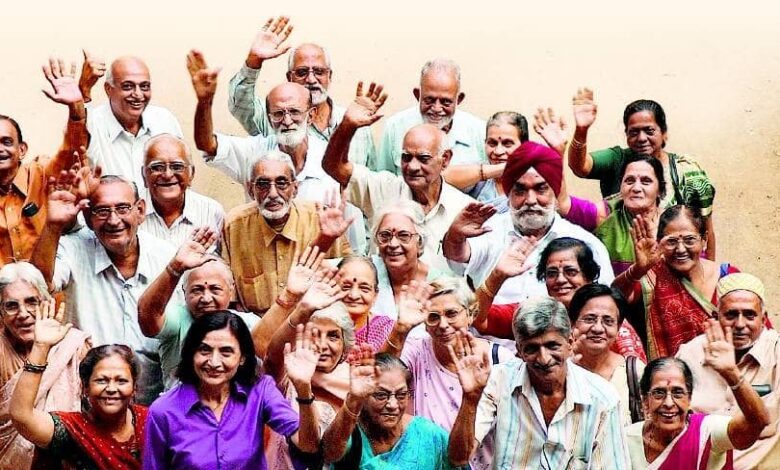
As India overtakes China, the most populous nation, it will face a colossal challenge—a rapidly aging population. As reported by the UN Agency for Population (UNFPA), by 2050, almost 20.8% of India’s population, a staggering 347 million people, will be senior citizens. The changing population patterns require quick action to provide for the aging community, including the required services, companies, and other institutions.
Key Old Age Statistics in India
- According to the expected population, the elderly will be the leading component of a decent % of the country’s population, which is 36%. It will consist of about 550 million people by the year 2100.
- According to a recent estimate, Kerala has the largest elderly population, at 16.5% of the total population in 2021. This is expected to rise to 22.8% by the year 2036.
- While the sex ratio between older people is increasing, from 1033 females/1000 males in 2011 to a forecast of 1078 in 2031, there is another concern about working-age males, who are increasingly causing concern related to their marriage to highly educated women in the same age cohort.
- States like Bihar, Uttar Pradesh, and Jharkhand will have slower growth rates because of their elderly geo-systems compared to the country’s average.
The UNFPA’s Report on India Age Cohort 2023 demonstrates India’s rapid population aging process. Today, there are about 149 million seniors (aged 65 and up, 10.5% of the population), but this will grow to 17.5% by 2050. The most incredible thing will be in 2050 when the population of old people in India will be more than that of children below 14.
Conversely, the same phenomenon will occur where the south and some northern areas of Himachal Pradesh and Punjab have a younger population than the national average. Still, the gap will become wider by 2036. For example, the state of Tamil Nadu may experience a growing share of the population over 65 years old by 7.0 percentage points.
Gender and Ageing
The survey emphasizes the gender dimension of poverty in old age, showing an increased chance for widowhood, having no family to support widows, working or having a stable income source, and relying on their relatives. Despite the low sex ratio of 951 females respectively, where the elderly are involved, the ratio goes up to 1,078, which shows better longevity in women.
Conclusion
India’s aging and greying population is becoming a serious challenge and offers growth opportunities. Managing healthcare, social security, and the social sector for a fast-growing elderly population. Policymakers should pick initial areas to increase the quality of life of elderly people and utilize their experiences, in which everyone could participate to develop an inclusive society that meets the aging needs.



